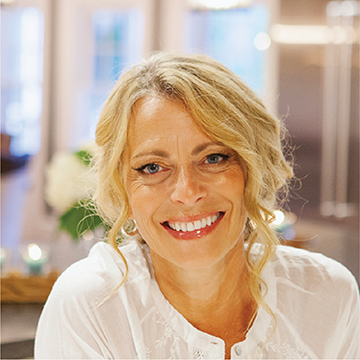When I figured out how to embrace fear and uncertainty instead of bury it in the recesses of my consciousness, things changed in a big way.
What’s the worst thing that can happen?
The question burned in my ears five years ago when I met with an insurance broker to find healthcare coverage while navigating a divorce. After twenty seven years of being covered by my husband’s plan, I had no idea what to do, what I should be looking for, or what it would cost. I wished I had paid more attention. Listening to the options available to me, my mind swam in murky waters of self-doubt, uncertainty and shame. I was humiliated by my lack of clarity or understanding of this essential component of adult life.
Feeling vulnerable and very much alone, I melted into sobs in my car.
Then I asked myself the question:
What’s the worst thing that can happen?
Answering my own question proved surprisingly grounding:
- Scenario One: I’ll get the wrong plan and will have crappy coverage, so if I get sick or need to go the hospital I’ll end up having to pay a lot for my care. Then what? I’ll choose a different plan next year.
- Scenario Two: I won’t be able to afford the best plan for my needs. Then what? By checking the different options against my monthly budget, I’ll figure out the most affordable choice.
- Scenario Three: What if the most affordable choice isn’t good enough?Then what? See response in Scenario #1.
I went on for about fifteen minutes, conjuring a range of scenarios, each time formulating a plausible, even comforting response. At the end of the exercise, I felt calm and centered, able, strong, okay. And I experienced the power of leaning into— instead of avoiding—the fears that bubbled up, a welcome skill as I looked ahead to the challenges associated with starting a new chapter of life.
Those skills have continued to serve me as I developed and launched a consultancy to help others change their relationship with fear. A passion project that, as the pandemic bore down on our country, I feared would be derailed. But by using the same skills I practiced five years ago, I was able to pivot my thoughts around my work and incorporate the “then what” approach to the challenges I faced.
- Scenario One: My scheduled workshops will be cancelled. Then what? They’ll move to virtual and suddenly become available to a wider swath of people that otherwise might not have been able to attend (which is exactly what happened).
- Scenario Two: Everyone is moving to virtual and the space will become too crowded. Then what? I’ll focus on ways to differentiate my message by focusing on my social media presence and upping content creation.
- Scenario Three: I’ll contract Covid-19 and get very ill. Then what? I’ll get the care I need and do my best to get better (and, hopefully, my health insurance will cover it).
As we continue to navigate through the uncertainty and struggle associated with a global pandemic, these skills remain relevant. After all, divorces and pandemics share the limelight in their ability to pull the rug out from under a person. Even if you’re lucky enough not to face either, the time and bandwidth dedicated to honing these skills will be well-spent indeed.
Without taking the time to identify and articulate our fears, we give them the power to overwhelm us and trigger confusion, disruption, even despair. Instead of offering clues and fodder for courageous choices, they then become a toxic thought collective, gaining momentum and power as they fester in our subconscious.
By shining a light on your fears, you can create the best scenario of all—one the empowers you to re-frame, and ultimately change, the thoughts they trigger.


